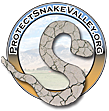The climate in Snake Valley changes dramatically from day and night and from season to season due to high elevations and low humidity. This also means you can get sunburned quickly!
A network of climate stations is set up in Snake Valley, and Desert Research Institute has summarized the data. Click on the station name to see the summary. All the stations on the valley bottoms receive less than 8 inches of annual precipitation, classifying them as arid lands. Only one station, at a higher elevation in the mountains, receives more than 13 inches of annual precipitation. To put that in perspective, Chicago receives 35 inches of annual precipitation, New York 42 inches of annual precipitation, and Miami 60 inches of annual precipitation.
Callao, elevation 4,348 ft, average annual precipitation 5.8 inches
Fish Springs, elevation 4,367 ft, average annual precipitation 7.8 inches
Partoun, elevation 4,800 ft, average annual precipitation 6.7 inches
EskDale, elevation 4,972 ft, average annual precipitation 6.4 inches
Garrison, elevation 5,273 ft, average annual precipitation 6.7 inches
Great Basin National Park, elevation 6,825 ft, average annual precipitation 13.2 inches
Temperature Example from Partoun, Utah
Temperatures in July and August often exceed 90 degrees F during the day and in December, January, February, and March, the lows are often below freezing.
Precipitation Example from Partoun, Utah
May has the highest monthly precipitation average at almost one inch, followed by April and June. December is the driest month, with an average of about 0.3 inches of precipitation.
Snow surveys
The National Resources Conservation Service (NRCS) comes to Snake Valley every year to conduct snow surveys in March and April and has done so since 1942. This long term dataset shows that the amount of snow in Snake Valley is gradually decreasing, which is part of a trend throughout the western U.S. More precipitation is falling as rain than as snow, and snow is melting earlier, changing the timing in streamflows (see this USGS fact sheet for more information). This means that the snowpack disappears faster and less water is available late in the summer, which could affect streams, wildlife, and agriculture.
Air quality
Snake Valley has some of the best air quality in the nation. Great Basin National Park has studied the visibility using a transmissometer and has determined that the median viewing distance is 150 km (93 miles). For more info, click here.
Dark Skies
With low humidity, high elevation, and most importantly, virtual lack of light pollution, Snake Valley is one of the best places in the world to look at the night sky. The Milky Way is visible almost every night, along with scores of other stellar objects. Great Basin National Park offers sky viewing parties throughout the summer, when astronomers bring high-powered telescopes and share their knowledge of the vast beyond.

